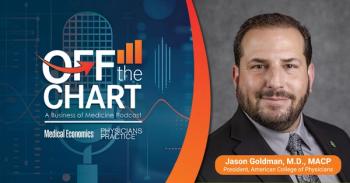
Getting paid for managing cardiometabolic disorders
There are a number of disease processes that must be managed, and doing so offers opportunities for reimbursement that you might not have been aware of.
Q: Our practice has a significant number of patients who require management of their cardiometabolic disorders. While we bill for their office visits and the lab work we do in our practice, I feel more should be done to manage these disorders. We are deterred, however, from providing additional services because I don't believe we will be reimbursed for many of the services we could provide. Do you have any suggestions on how we might better care for this patient population and receive proper reimbursement for our efforts?
A: As you are aware, the prevalence of cardiometabolic disorders and associated risk factors has increased significantly during the past 10 years. There are a number of disease processes that must be managed, and doing so offers opportunities for reimbursement that you might not have been aware of.
The first thing to remember when billing for your services is the ICD-9 code for metabolic syndrome ("dysmetabolic syndrome X"), which is 277.7. In addition, remember to code associated manifestations, such as cardiovascular disease (414.00-414.07) or obesity (the 278 series of codes).
Once you have determined the services you wish to provide, estimate the total costs of doing so. (For example, calculate whether it is more worthwhile to contract with a nutritionist or exercise instructor to present classes exclusively for you, or to establish a joint program with these specialists.)
After you have arrived at a global fee for your program, estimate the cost for a typical cardiovascular event. This should consist only of your fees for the office and hospital (admission, ICU care, hospital visits, etc.); it does not include the facility or medication costs.
Finally, present to the top five insurers the financial benefits of preventive care (some of the services, such as lab, blood pressure monitoring, etc., may already be covered services).
In addition to marketing your program to insurers, create educational fliers for your patients and to distribute during community events such as health fairs and senior center presentations. Some patients may sign up for your program even if their insurance only partially covers it, once they are aware of the consequences of uncontrolled obesity, diabetes, hyperlipidemia, and/or hypertension.
For routine office visits in which the patient has not enrolled in your program or the insurer will not pay for a comprehensive preventive program, be sure to use the diagnosis codes associated with the syndrome when reporting your services.
Many times, insurers will pay for annual exams that include risk-factor reduction or for extended exams in which you counsel patients because of the risk factors they exhibit. In such cases, the visit would be billed on the basis of time, with the time spent face-to-face with the patient and counseling content clearly documented in the medical record. Keep in mind that in order to bill for time, your documentation must note that more than 50 percent of the visit was devoted to counseling or risk-factor reduction.
The author, vice president of operations for Reed Medical Systems in Monroe, Michigan, and a Medical Economics consultant, has more than 30 years of experience as a practice management consultant, and is also a certified coding specialist, certified compliance officer, and a certified medical assistant.
Newsletter
Stay informed and empowered with Medical Economics enewsletter, delivering expert insights, financial strategies, practice management tips and technology trends — tailored for today’s physicians.
















